Reviews
Mark Robson
USA, 1943
Credits
Review by Brynn White
Posted on 13 October 2009
Source Turner Home Entertainment DVD
Related articles
Reviews
The Seventh Victim (by Matt)
Categories 31 Days of Horror VI
Val Lewton’s oeuvre as a producer - in story content, presentation, and tone - is reminiscent of Chris Van Allsburg’s The Mysteries of Harris Burdick. A collection of illustrations and one-line story excerpts, Burdick has served as inspiration for many a grade school creative writing exercise. The images, mood pieces with a provocative dash of fantasy, are haunting in their lack of context. They indicate the ability of evocative lighting & framing to cast an indelible spell, or of a base narrative conceit’s ability to create a texture that ignites the imagination. This faith in the power of what is not shown or told has resulted in a long string of minimalism in the horror genre. Lewton’s economical usage of the dark and the unseen in Cat People is now industry legend, but the subtlety and oddball elliptical grace of The Seventh Victim has never been duplicated.
The image upon which The Seventh Victim hinges is that of a noose hanging from the rafters of an empty room. Its accompanying line:”I runne to death, and death meets me as fast, and all my pleasures are like yesterday” (this John Donne excerpt serves as a type of opening credits epitaph). It is the audience’s first introduction to the character of Jacqueline, the eponymous woman gone missing. Clues lead her sister Mary to this rented room above an Italian restaurant, which Jacqueline has been reportedly drifting in and out of for short visitations. Not exactly your average secret getaway spot.
Val Lewton’s modus operandi at RKO - a pre-designated budget, running time, and title in exchange for relative freedom in production - resulted in some of the most unique Hollywood output of the 1940s, if not ever. At the eccentric center stands The Seventh Victim, which almost broke habit as an A-picture until the studio’s dubiousness over Lewton’s election of Mark Robson to direct. Robson, while bearing impressive cred as assistant editor on Welles’ Citizen Kane and The Magnificient Ambersons, had never helmed a production before. After the loss of Jacques Torneur, Lewton was most comfortable keeping it in the family and placed his faith in the editor of their previous three collaborations. While Lewton’s fingerprints are smeared all over this one, Robson’s subsequent forgotten masterpiece, The Bridges at Toko-Ri, is a similarly poignant march to inevitable death.
Originally, the Lewton unit’s seventh victim was a Los Angeles woman forced to identify a serial killer after learning she is next on the hit list. Lewton scrapped the idea in lieu of a more personal setting: New York’s Greenwich Village, his former stomping grounds as a young pulp novelist. It follows the Goldilocks-like Mary’s search for Jacqueline, initially kidnapped by, and then in flight from, a mysterious collective called the Palladists. These victimizers? A gaggle of tea-sipping Satanists. The theme? As coolly summarized by Lewton in response to a patronizing RKO exec: “Death is good.”
Lewton films originated as short stories, an efficient way to carve a nuanced world and its inhabitants around the basic framework of “A love story , three scenes of suggested violence, and one of actual violence. Fade out.” This set formula is infused with a craftsman’s zeal and woven into a tone poem meditation on mortality. Despite a web of character couplings and desires, he ‘love story’ of The Seventh Victim is between Jacqueline and death. As a most literal femme fatale, she entrances all she comes in contact with into her funereal orbit.
The film opens on a most recognizable set piece: the central staircase of The Magnificent Ambersons, which Cat People’s cursed Simone Simon would then descend, much as The Seventh Victim’s heroine Mary plunges into her journey through the lower depths of the city. The ingenious sound design defamiliarizes the space, as an all-girl class recitation of Oliver Wendell Holmes and corridor giggles echo from the floors above. The private smirk Kim Hunter’s Mary shares over these everyday sensations, along with her affectionate petting of the grandfather clock on the way out the door, are the only spurts of happiness, or instances of communion with one’s environ, emitted from the entire film. Not that the school is an all-embracing womb: Mary is coldly informed of her sister’s disappearance by the sapphic headmistress, who hasn’t been collecting on Jacqueline’s tuition checks. This nurturing space is, after all, a financial transaction; the two sisters’ orphan status is indicative of a pervading loneliness that exudes from the characters and the shadow-laden cityscape.
She is abruptly engaged by another bereaved soul, a teacher who admonishes Mary to never return as she did, that “it takes courage to exist in the world.” A chilling offscreen voice commands that she return to headquarters and Mary is left alone. Upon her arrival in New York, Mary visits Jacqueline’s cosmetics company La Sagasse and discovers that Ms. Redi, another staunch, hard-nosed matron , has seized the reigns from her absentee sister. A conversely affectionate beautician named Frances suggests that Jacqueline and an attorney Gregory Ward were recently spotted at Dante’s (wink, wink) Italian restaurant.
The restaurant and rooms above reveal further occupants beyond the noose: a struggling poet who feasts nightly at his regular table and sneaks glances at Mary; a consumptive neighbor, played by Lewton regular Elizabeth Russell, who wanders zombielike through the obscure corners of the frame. Mary next meets a private investigator at the Missing Persons Bureau (a pan across the window reports of others’ AWOL loved ones pre-dates The Bicycle Thief’s chilling reminder that this is only one tale amidst many other struggles) and joins him on a nocturnal investigation of the cosmetics company. This doomed venture employs little more than a dark corridor, a room of mysterious contents, and an anxiety-inducing real time ‘walk into the darkness,’ but is a tour de force of pure terror.
The Seventh Victim also famously drops in a pre-Psycho shower sequence. Ms. Reti’s behatted shadow menaces Mary with the command she best cease her search and return to school. Robson takes the opposite approach from Hitch’s frenzied attack; other than one cutaway shot to the plastic morphing of Hunter’s face as she peers from behind the shower curtain, he establishes a direct line of subjectivity between the viewer and the water droplets quivering on Mary ‘s (ne Marion’s) vulnerable backside. For a film so preoccupied with the solitary soul, it’s a hairraising evocation of the city’s oppressive lack of privacy.
Her sister’s heretofore secret husband, Gregory Ward, details his attachment to Jacqueline, an “unforgettable” enigma that he could “never quite get a hold of.” This is not the first projection of the feminine mystique onto Jacqueline. When describing the beautiful, sophisticated, commanding presence of her sister to the Dante proprietors, Mary assures them they would most certainly know and remember Jacqueline if they had seen her.
However, concrete Jacqueline proves of equal height to her sister, with a bold but harsh Cleopatra haircut, and a droopy underlid that defies pulchritudinous symmetry. Has Jacqueline been shrinked and weathered by her traumatic experiences? Or has she always been the physical embodiment of Eros and Thanatos? She haunts both interior and exterior space in a full-length fur coat, a costume simultaneously glamorous and primitive. Jacqueline is undeniably alluring, but by way of a decaying charisma which incriminates the spectator in the morbid fascination that consumes the characters (climaxing when the Palladists spend a hearty afternoon observing Jacqueline contemplate a goblet filled with poison).
Tim Conway reprises (or resurreccts?) the Dr. Louis Judd character of Cat People with a brand of deviant charm befitting the brother of George Saunders. He has been housing Jacqueline and subsequently penetrated the prim and proper cult which seeks her execution in the name of betrayal (for telling an outside party of their existence). While Ward becomes more intent on locating his wife for the sake of her more appealingly corporeal sister, Judd is like a moth to the flame of the root of Jacqueline’s torment. He seems a tad too cozy with her persecutors, and suspicously unforthcoming about what he knows. All the male characters seem demobilized and emasculated- the romantic poet plagued by the demands of a follow-up to his first and only success, the besotted and helpless husband, and the no-longer-practicing Dr. Judd. Each is revived in some way by their sordid yearning for doomed love in its many forms; the poet for unrequited love, the husband for forbidden love, and the doctor for the unbalanced dynamics of nurturing love. “This is the end of a beautiful relationship,” he grieves as he gives Jacqueline’s care over to Mary.
Similarly ambiguous lines of dialogue pepper the film, even more disconcerting in repeat viewings as their complete intentions remain unclear. Never has a Lewton work felt so much like a consortium of striking imagery and tantalizing hints of secrets and sordid details rotting under the surface. La Sagasse employee (and extracurricular Satanist) Francis reveals an almost pathological attachment to her former boss Jacqueline, as “no one was ever so nice to me!” A Palladist, played by von Sternberg’s other grand dame Evelyn Brent, is notably missing an arm - eerily hinting at the trauma that perhaps pushed her to the dark side. John Ashberry observes “a sense throughout the film that people are saying whatever comes into their heads, and that the apparent mysteries of the plot are perhaps only a smokescreen for other, ill-defined ones. We gradually get the feeling that the ground under our feet is unstable.” Gripped by a similar sensation following the PI’s death under her watch, Mary seeks the Sisyphusean comfort of a subway ride to the end of the line and back. Solace beckons in a cyclical journey along a pre-chartered track, until that attempt is intercepted by the corpse returned—in the hands of two Palladist henchman parading the cadaver as a drunk.
This sequence reaffirms the film’s overriding arc: a procession into oblivion. Lewton boldly negates existence with his investment in Jacqueline’s plight. She wanders home after breaking her date with the Palladists’ assisted suicide by poison. Menace seemingly lurks at every angle. With Cat People and The Leopard Man, Lewton proved the unflappable horror evoked by a woman alone in the dark (the image, as beautifully articulated by Manny Farber of “a girl waiting for some noncorporeal manifestation of nature, culture, or history to gobble her up”), but he trumps himself with The Seventh Victim by presenting a a character who embraces that very void. Jacqueline is interruped by a acting troupe exiting the backstage door, but they offer mere revelry and “Beer and Sandwiches!” The hedonists and cultists colletively formulate their own defenses.; but when Jacqueline peers into the ghastly eyes of Russell’s dying blonde she loses her will to combat the inertia of a world where little makes sense but the end of things. David Thomson raps the gavel most resoundingly when he orders “Every horror film ever made or planned” to “look at The Seventh Victim because of its extraordinary grasp of spiritual emptiness, the beckoning alternative to action and activity.”
More 31 Days of Horror VI
-
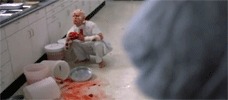
From Beyond
1986 -
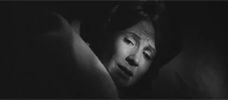
The Haunting
1963 -
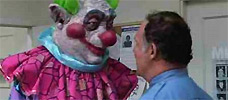
Killer Klowns from Outer Space
1988 -

Shock ‘Em Dead
1991 -

Critters
1986 -
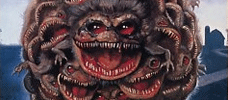
Critters 2
1988 -

The Fall of the House of Usher
1928 -

Jonestown: The Life and Death of Peoples Temple
2006 -

In the Mouth of Madness
1994 -

Winterbeast
1991 -

Black Roses
1988 -

Needful Things
1993 -
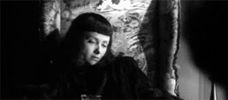
The Seventh Victim
1943 -
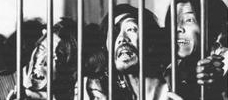
A Page of Madness
1926 -
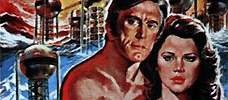
Holocaust 2000
1977 -
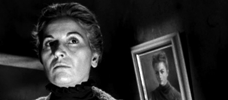
The Man and the Monster
1958 -
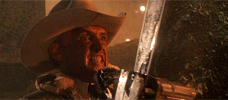
The Texas Chainsaw Massacre 2
1986 -

Trick or Treat
1986 -
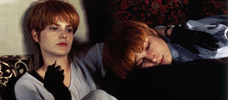
Single White Female
1992 -
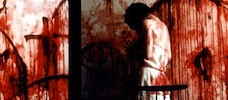
Trouble Every Day
2001 -
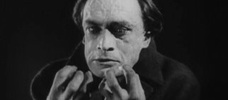
The Hands of Orlac
1924 -
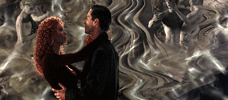
The Devil’s Advocate
1997 -
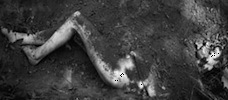
Nocturne
1998 -

Hardware
1990 -

Hard Rock Zombies
1985 -

The Slumber Party Massacre
1982 -
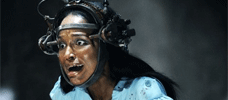
Saw VI
2009 -
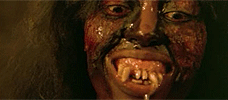
Zombi 4: After Death
1988 -
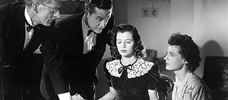
The Uninvited
1944 -
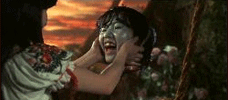
Hausu
1977
We don’t do comments anymore, but you may contact us here or find us on Twitter or Facebook.



